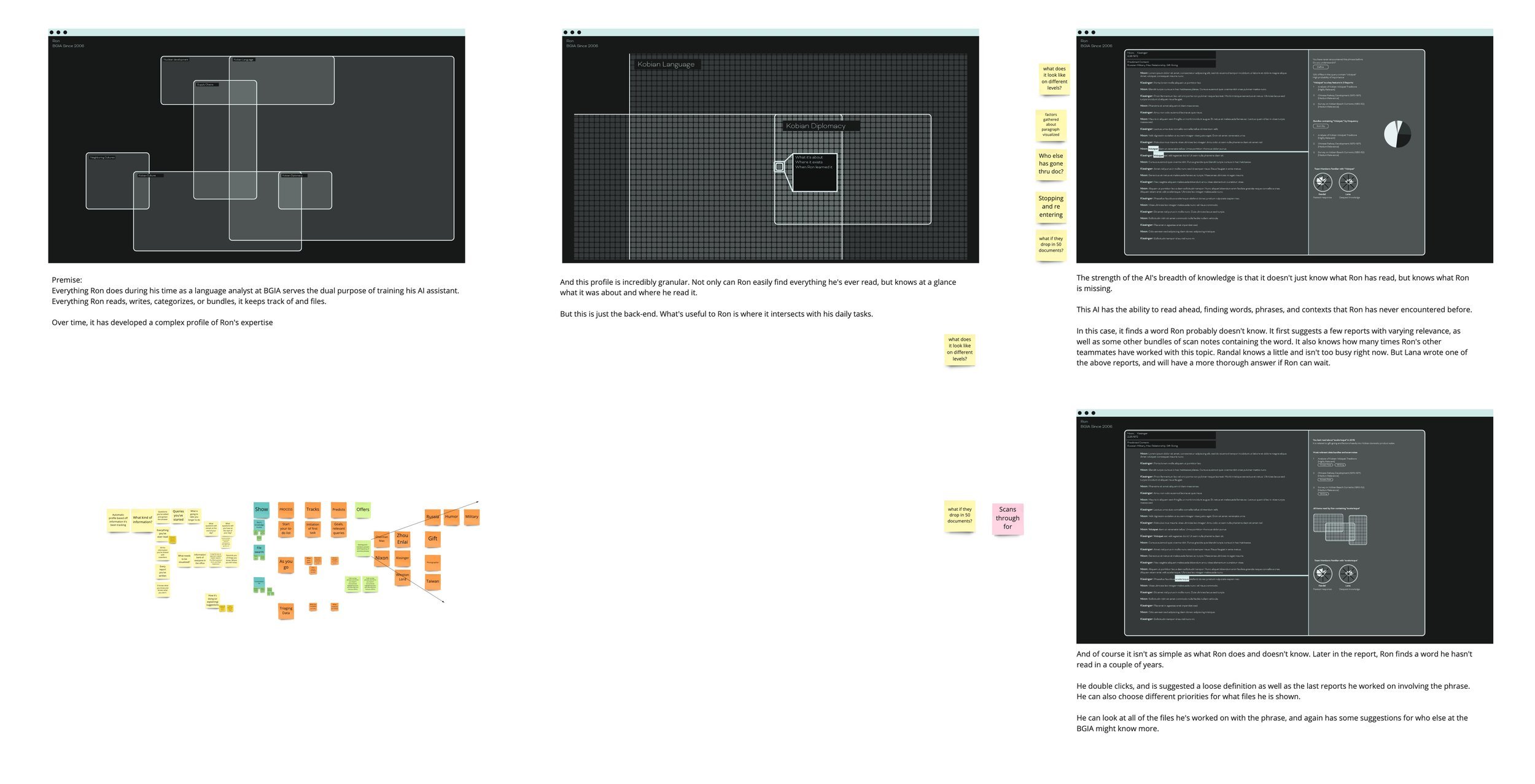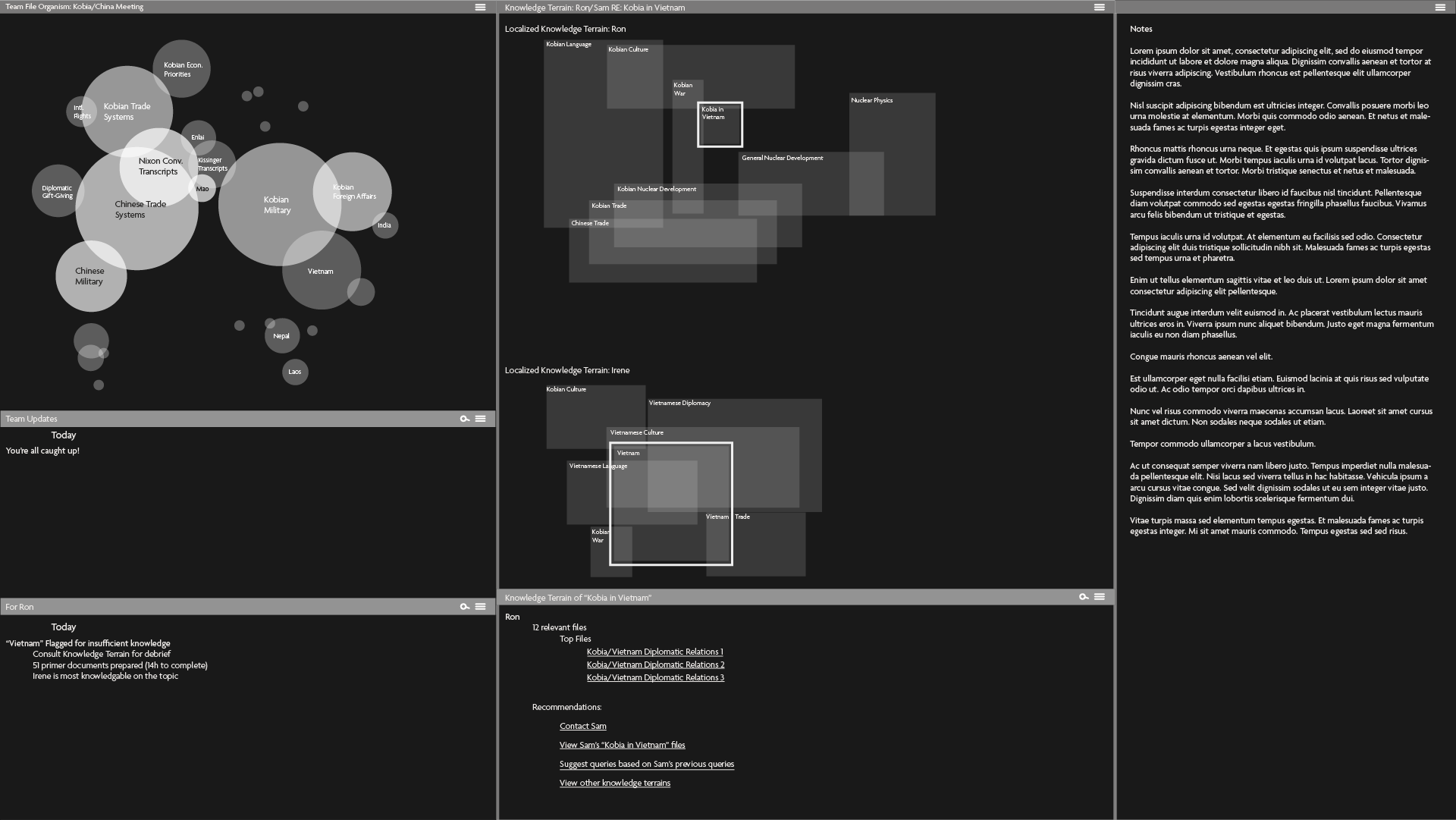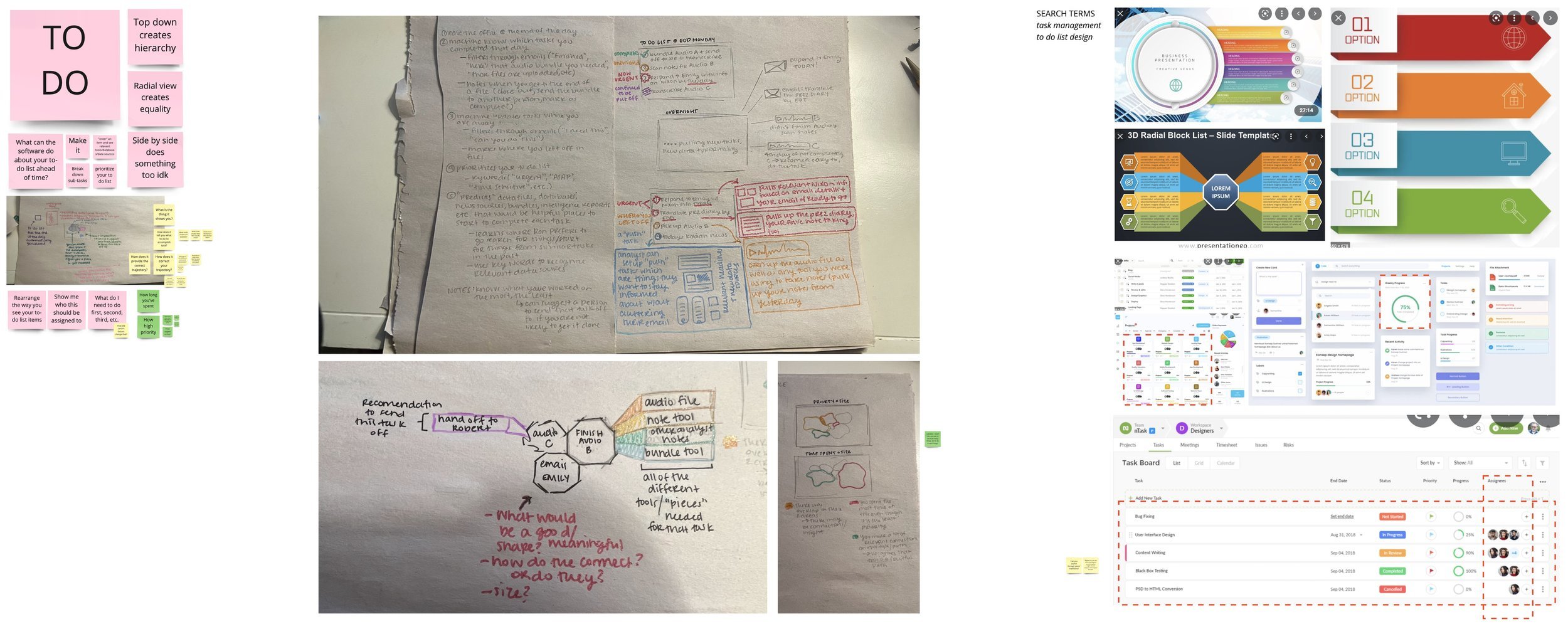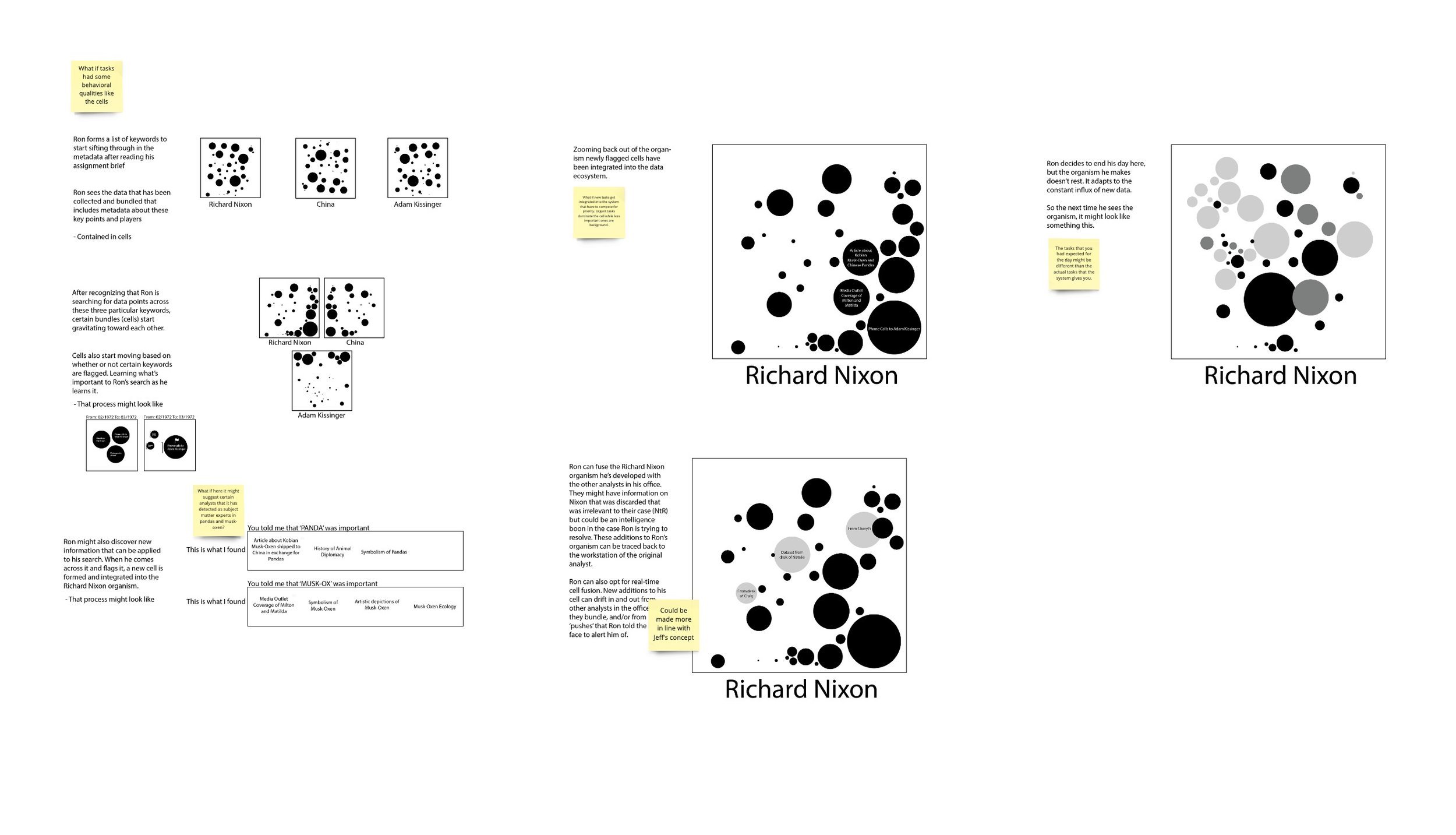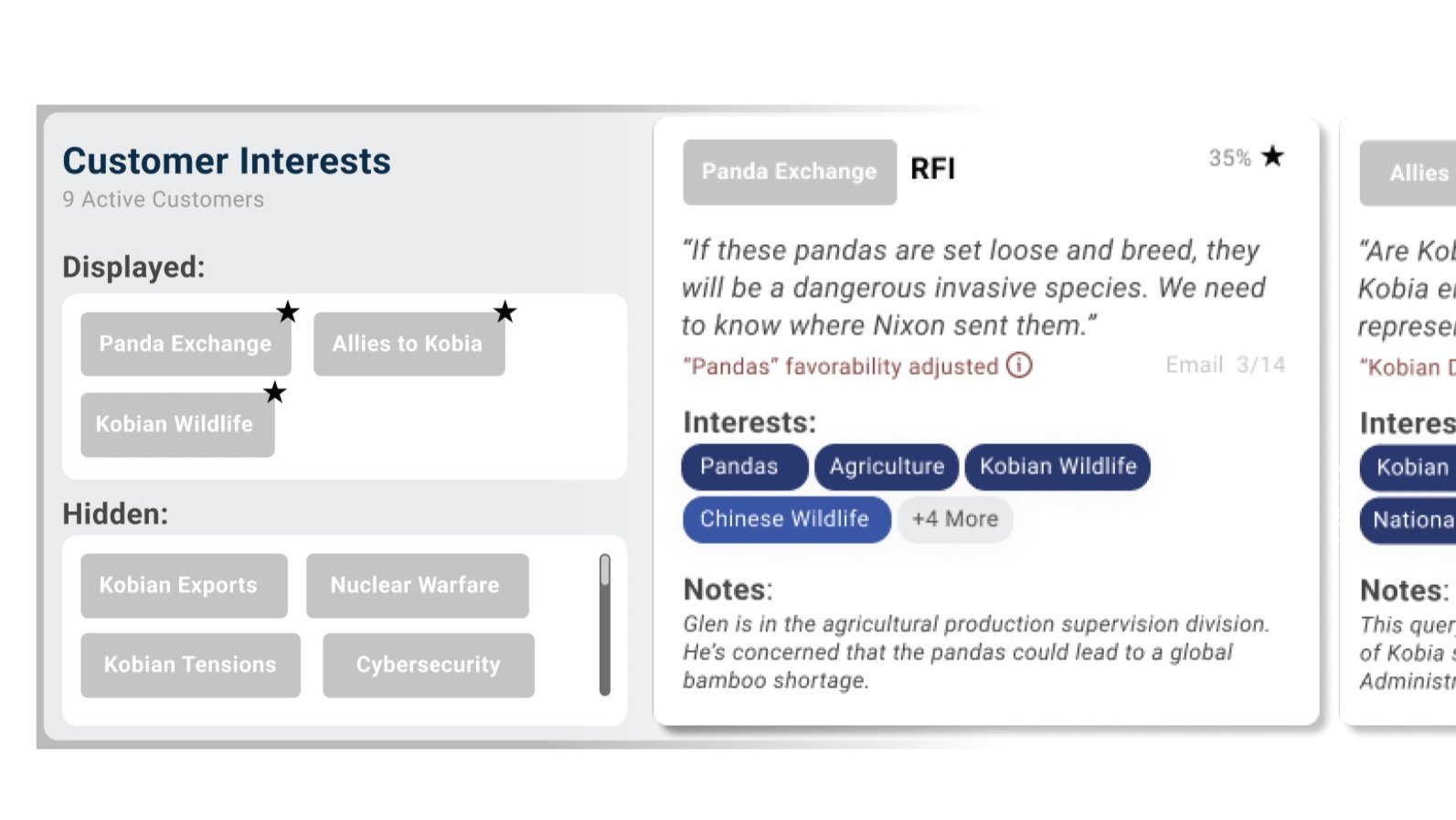An interface for intelligence triaging and task advancement
UX/UI Design. 5 month long project (Jan-May 2022)
QUICK SUMMARY
Completed during my studies at NCSU, this group project imagines a prototypical interface for an intelligence analyst working for the Laboratory of Analytic Sciences as they triage incoming reports about the nature of an emerging relationship between two nations.
Getting Started…
CHALLENGE
This project, in collaboration with LAS, was developed by myself and two other team members over the spring semester of 2022. The prompt, given to us by LAS, was designed to tackle the issue of reorienting oneself into the workday. The scenario (also provided by LAS) involves a fictional country, Kobia, whose president, Richard Nixon, has visited China - actual intelligence, and records were sourced from the now public Nixon tapes. We conducted a series of interviews with intelligence workers to understand what their role is, and how they triage and assess data that is important for their customer. Customers are often unknown entities and organizations that submit Requests for Information (RFIs). Subject Matter Experts are assigned to teams to translate and annotate an overwhelming influx of data.
GOAL
To leverage artificial intelligence and machine learning to quickly and seamlessly reorient intelligence workers into their daily task flow.
ROLE
This was a group project I worked on with two fellow MGXD students
METHODS
Interviews, user journey mapping, task flows, wireframing, prototyping, pain point identification
APPROACH
We all took turns iterating concepts for the design of the interface - synthesizing our methodology into a design that addresses our persona’s most compelling pain points
Understanding the problem space…
ABOUT OUR PERSONA
Ron (he/him): Language Analyst
Ron goes into work and expects to finish an eight hour shift and accomplish an appropriate workload for the day. He expects to translate scripts both textual and verbal about nuclear arms development in Kobia. An urgent development at the BGIA forces Ron to shift gears and translate intel in a field with which he has less familiarity.
Struggles to find an entry point in his workflow due to influx of data and the unfamiliar terrain
Difficult to stay informed of current affairs and worried he may miss something
Consulting with SMEs is essential, but disruptive
Want to skip the details?
Design prep…
USER JOURNEY MAPPING
User journey mapping can significantly benefit the development process of a persona by providing a deep understanding of their interactions and experiences with your product or service throughout the entire customer lifecycle. By visually mapping out the various touchpoints, pain points, and emotions at each stage, you gain valuable insights into your persona's needs, desires, and challenges. This empowers you to make informed decisions and tailor your offerings to better meet their expectations, leading to improved user satisfaction, increased engagement, and ultimately, higher customer retention and loyalty.
AS-IS
An as-is user journey map is a visual representation of a user's current experience with a product or service, highlighting pain points and opportunities for improvement, used to understand and enhance the user's interactions and overall satisfaction.
TO-BE
A to-be user journey map is a visual representation of the ideal future state of a user's experience with a product or service, used to envision and plan improvements to meet user needs and business goals.
WIREFRAMES + ITERATIONS
Iterative designs that allows for continuous refinement and optimization based on user feedback and interviews, ensuring that the final product meets user needs and expectations effectively.
T-HEX
“Scan. Inform. Complete. A Reflexive approach to intelligent task advancement”
Main Features
Flexible Task Advancement: Though AI tailors the presentation of tasks for the user, interpreting the ideal task flow is open to nuance.
Connect to Colleagues: The team updates panel lets users peruse progress and developments other analysts have made as they pertain to a selected task, allowing for seamless, non-disruptive, note comparison.
Tailored Toolkit: Machine learning optimizes the appearance of tools based on individual user behavior. Users have the ability to pin essential tools.
Suggested Keywords: Work collaboratively with the AI to source reports and other material through selective keyword activation pulled from other panels within T-Hex.
Hex Prioritization System: Size, color, and proximity indicate priority. Closer hexes are most relevant to task. Hexes located to the left are higher priority.
Align with Customers: Task-related requests for information (RFIs) and information needs (INs) are kept in view for quick referencing to allow for greater alignment between the analyst and customer.
Text-Based Display Alternative: Users can move between nuanced hex display and linear, text-based version of tasks and intel.
Open Source Data Integration: AI aggregates internal reports and available open source information for a more holistic view of incoming intelligence.
AI Assisted Workflow: The AI suggested task flow and surrounding panels can be quickly adjusted by subvocal or text-based input from the user.
Reflection
How did your users respond?
Overall I think my team uncovered something very interesting to our users. The next year, the same studio that T-Hex was designed in picked up where we left off. T-Hex and our persona was presented to the upcoming first-year Master’s students to expound and study more closely. To me, that is a sign of a very successful design investigation.
What's next?
This project was seen and dissected by many hands after we handed it off to the Laboratory for Analytic Science in 2022. The following year it was picked up by junior students, and taken in similar directions and reconfigured for different contexts. For more information on what might be done with it, your best bet would be to contact the studio director.
What did you learn?
Artificial Intelligence and Machine Learning are not magic. While we don’t fully understand its implications and capabilities we should be progressive in forming legal restraints around ethical implementation of enterprise-level AI.
What would you have done differently?
I would have had more “fun” in visual experimentation. While I’m still really proud of what my team accomplished both UX and UI, I think if we had more time to veer from convention and into more novel approaches. We would have had more fun in the making process.







